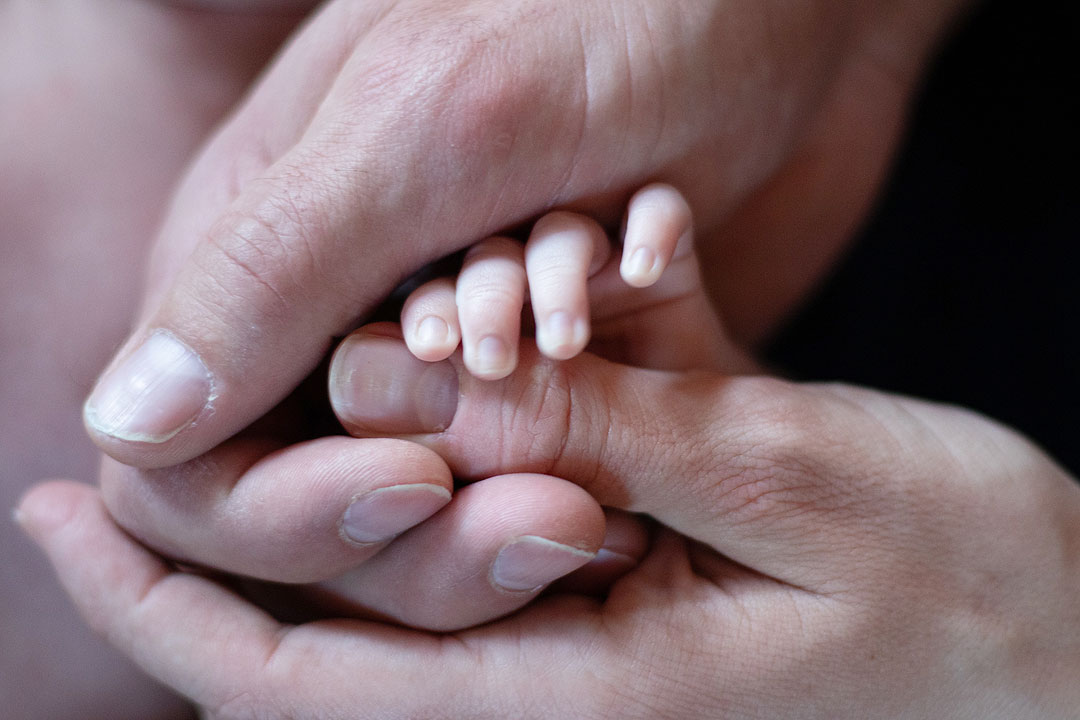
By Luisa Maria Jacinta C. Jocson, Reporter
IDA MARIE M. CASTRO, a 57-year-old mother, described the process of adoption in the Philippines as “heartbreaking.”
“My heart was breaking just going through the extent of the process,” the sales director said in a Facebook Messenger chat. “Every time there was an interview, I felt my son Paulo was in danger of being pulled away from us.”
At one point, she thought about going somewhere the adoption officers wouldn’t find them.
“My entire experience in the adoption process was horrible,” Ms. Castro said. “It was so unfair for strangers to look into our lives and take a snapshot of one afternoon and make a report about it.”
In 2015, the Social Welfare department accredited the Castros to become foster parents of a foundling, pending the adoption process.
 It has been eight years of home visits, paperwork, fees and waiting since the Castros started the whole thing, and it has yet to be completed.
It has been eight years of home visits, paperwork, fees and waiting since the Castros started the whole thing, and it has yet to be completed.
There are about 1.8 million orphaned and abandoned children in the Philippines, according to data from Philippines Without Orphans. From 2009 to 2021, there were 8,258 children declared legally available for adoption, government data showed.
The adoption process is expensive, long and known for its bureaucratic bottlenecks.
Declaring a child available for adoption is a stringent process, Arlyne A. Fernandez, executive director at Virlanie Foundation, Inc. said via Zoom.
“It’s the role of the social worker to exert all efforts to locate the family and see why they were abandoned,” she said. “It takes us six months to a year, at most three years, before we can make sure that this child has no family.”
Announcements on the radio, television and social media have to be made. If a child is found abandoned, the government starts the process of declaring the child legally available for adoption.
Esther Elizabeth Suson, content manager at Generations—Home, noted that since the process of searching for the child’s biological family could take years, they encourage families to also consider foster care, not just adoption.
“While these children wait for their certification declaring a child legally available for adoption or to be reunified with their biological families, they can experience the love, safety and care of a family,” she said.
Ms. Fernandez said time is one of the biggest challenges during the adoption process.
“We are happy when a child can get adopted in two years,” she said. “Some get older and are never adopted. There’s a different process for children with special needs. Some children with past trauma and abuse must be processed before they are considered for adoption.”
Once approved for adoption, the child is then set up to be matched with their potential parents. The matching committee is composed of a panel of experts that include psychologists, pediatricians, lawyers, and government officials.
“Not everyone can just decide to adopt,” Ms. Fernandez said. “There are many presumptions on adoption. People think they can go to an adoption center and pick out a child. That’s not how it works.”
Parents must attend seminars and orientations and meet all qualifications. They must be at least 15 years older than the child.
One challenge faced by adopted children is being integrated into the new family unit.
“It can be as simple as adjusting to a new kind of cooking or a new room, or as complex as learning how to call the parents ‘mom’ and ‘dad,’” Ms. Suson said. “For adoptees with biological children, their challenges may be in helping their children integrate as a family while celebrating the diversity of how they joined it.”
“Despite stereotypes in local media that adoptees feel like outcasts in their adoptive families, they can and do feel loved, cared for and accepted depending on how well their parents and communities raise them,” she added.
Older children are less likely to be adopted.
“In the Philippines, most parents want to adopt a younger child,” Ms. Fernandez said. “It’s hard when they’re older. When the child is 16 years old, the chances of them being adopted are slim.”
Paulo Roman A. Castro, Jr., an orthopedic surgeon and medical director at the Pasig City General Hospital, who is also Ms. Castro’s husband, said the adoption process is extensive, especially amid a coronavirus pandemic.
“Due to the pandemic and with physical restrictions, the documents were presented as judicial affidavits, with an initial hearing via Zoom,” he said in a Messenger chat. “The schedules for subsequent hearings were discussed at this meeting, which stretched to more than a year.”
They hired a lawyer specializing in family law. They also had to meet financial and psychological requirements and pass national agency clearances. The documents were submitted to a regional trial court in Pasig City that specializes in family matters in 2021.
FOR SALE
Strict adoption measures are meant to prevent child trafficking and abuse. Last year, the Social Welfare department reported cases of illegal adoption on social media.
Ex-Senator Leila M. de Lima in 2019 sought an investigation of infants being sold both online and offline for as little as P300 each across Southeast Asia, including the Philippines.
In the Philippines, babies were being sold outside public hospitals and in slums, she said, citing news reports. Poverty remained to be one of the major drivers of child trafficking, she added.
Still, the government is trying to make the adoption process less taxing.
Last year, ex-President Rodrigo R. Duterte signed into law a measure that made domestic adoption an administrative process instead of a judicial one, making it more efficient.
Before this, adoption was separated into two phases — the pre-adoption administrative phase and finalization of adoption, the judicial phase, which is costly and lengthy, National Authority for Child Care (NACC) Social Welfare Officer Imelda R. Ronda said in an e-mail.
If all requirements are completed on time, the NACC could issue an adoption order in six to nine months.
“It is important that the processes for adopters are made simple, swift, and inexpensive,” she said. “This is a significant progress because it encourages more adopters to go through the legal adoption process.”
Carmela Andal-Castro, a child protection advocate, family lawyer and member of the NACC panel of experts, said the law speeds up the domestic adoption process.
“It is a welcome development in the adoption and child protection space,” she said in an e-mail. “Domestic adoptions are now administrative and therefore need not be filed and adjudicated in courts. This means that the steps and expected timelines are now made simpler and faster.”
Prospective adoptive parents can save time and resources, she said, adding that it’s also for the best interest of the child. “The sooner a child is matched to adoptive parents, the sooner the adjustment process can begin for both the child and their new family.”
Ms. Fernandez said that the law would encourage more Filipinos to adopt locally. “Making the process administrative would mean encouraging more local families to adopt children in the Philippines, which would maintain the cultural background of the child. It will be an easier adjustment.”
Ms. Suson said protection measures have not changed.
These are meant to protect the child from neglect and potentially abusive parents, Ms. Ronda said. “Otherwise, it would be excruciating and frustrating especially on the part of the child if the placement with the adopter is disrupted. We also would like to ensure that both the child and adoptive families are psychologically prepared as they navigate through this new life of having each other.”
Ms. Fernandez said there are still many children who have been “illegally adopted” — those whose birth certificates were faked. “It’s not fair to the child,” she said, adding that the law now grants amnesty to parents guilty of faking their child’s birth certificate.
Ms. Suson said the process of certifying children as available for adoption should be streamlined. “One reason many parents who have diligently completed all documentary requirements still face delays is because they wait for a match.”
“The process needs to be fast-tracked. With so many documents to go through, the child usually has already grown up with us. The shorter the child’s stay with us, the better,” Ms. Fernandez said.
Ms. Castro, the foster parent, said social workers need to be better trained.
“A number of social workers were assigned to us through the years, and the experience becomes very subjective — based on the biases and mood of the social worker,” she said. “Some had a heart for adoption, the adoptive parents and the adoptee; one had an arrogant and nonchalant approach.”
She also said some documents, including the foundling certificate, are “detached from describing human beings.”
In the case of Paulo, who is turning eight in July, his foundling certificate narrates the inhuman conditions of how he was abandoned.
“The foundling certificate contained what looked like product specifications,” Ms. Castro said. That’s what I’m so heavy-hearted about because my son does not deserve a permanent document describing him that way because it was but a fleeting moment of his existence. The birth certificate with us as parents is the only document that should be existing.”
Many Filipino parents go through pains of lengthy adoption process
Source: Bantay Radio
0 Comments